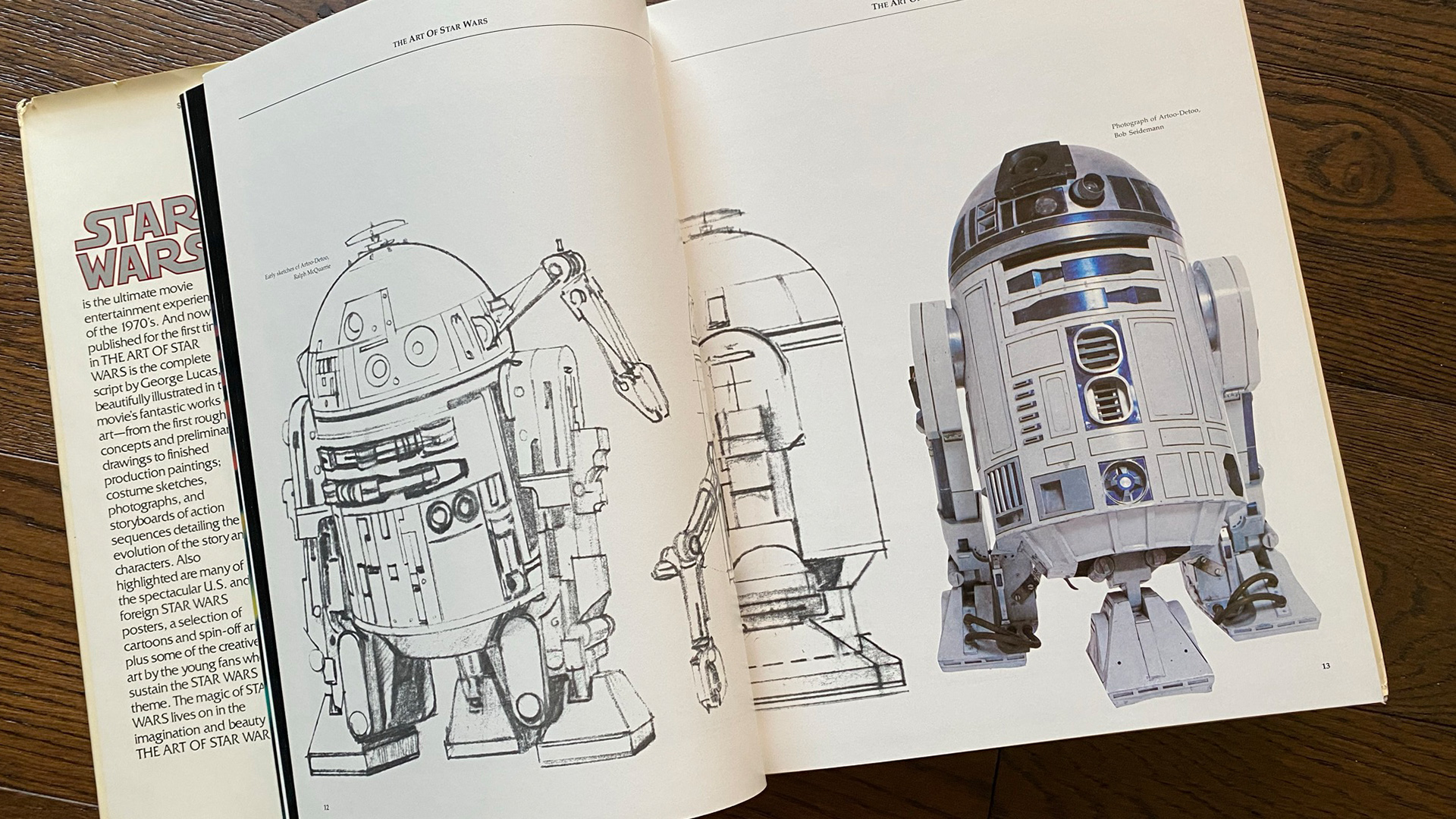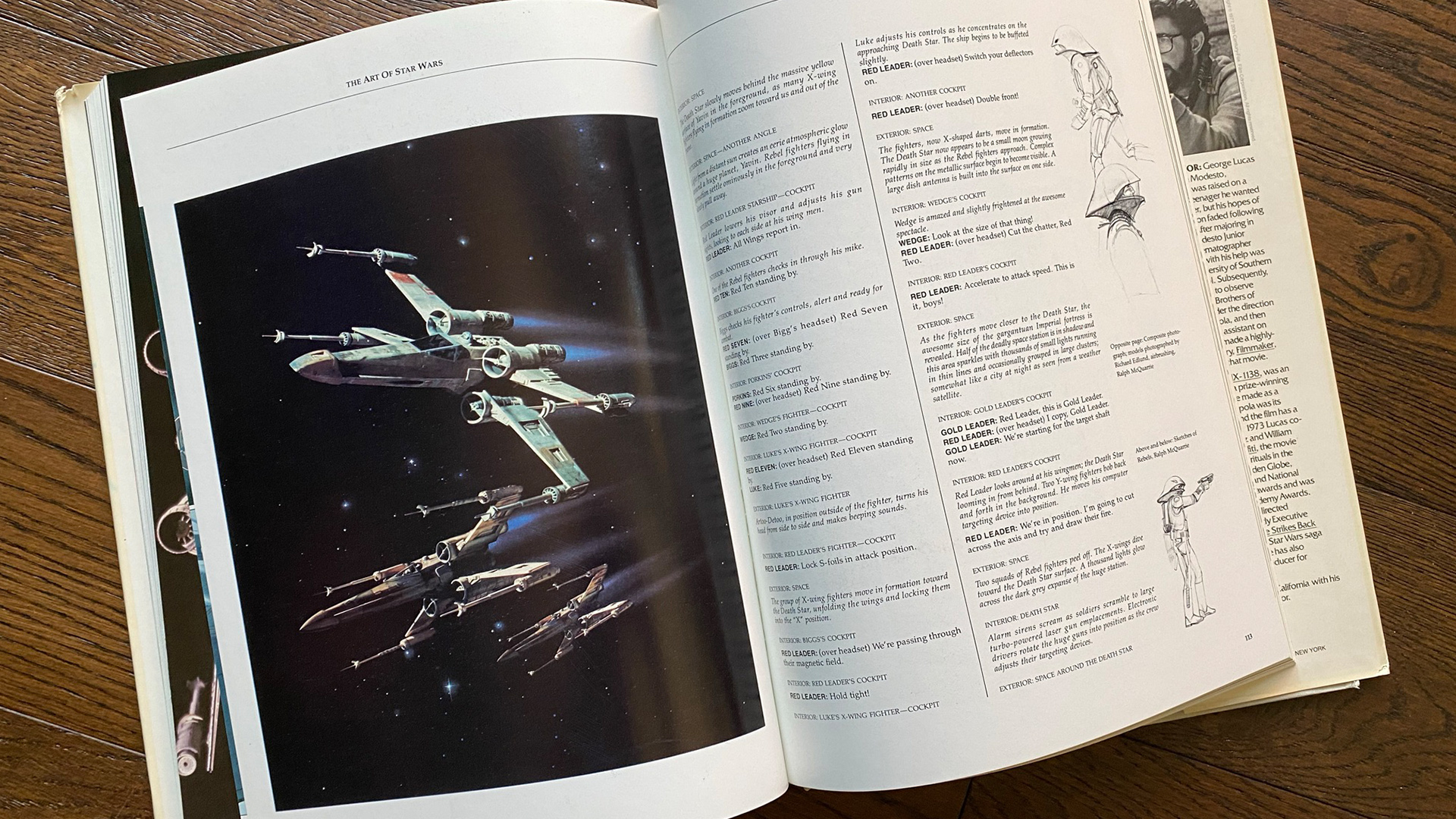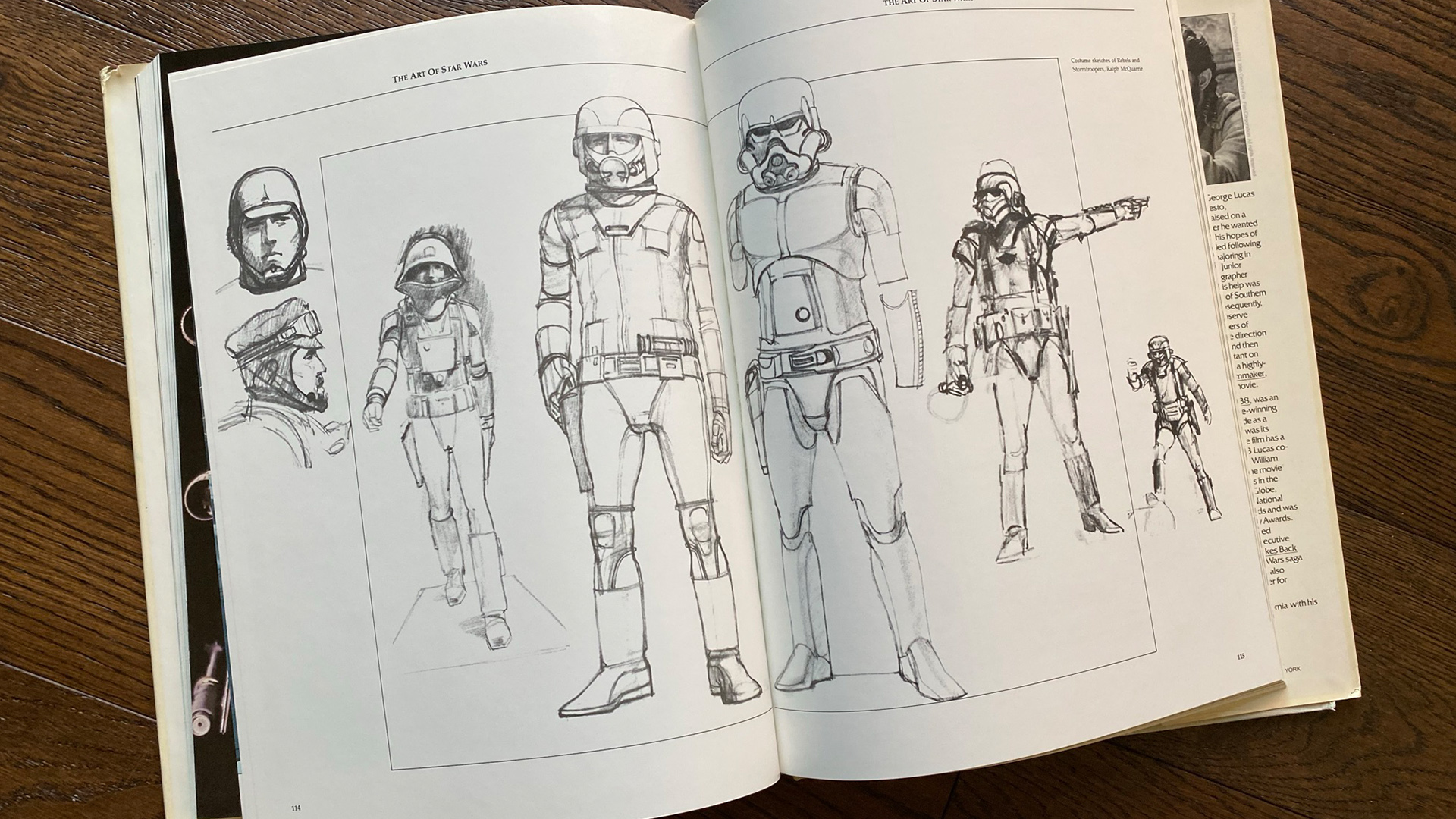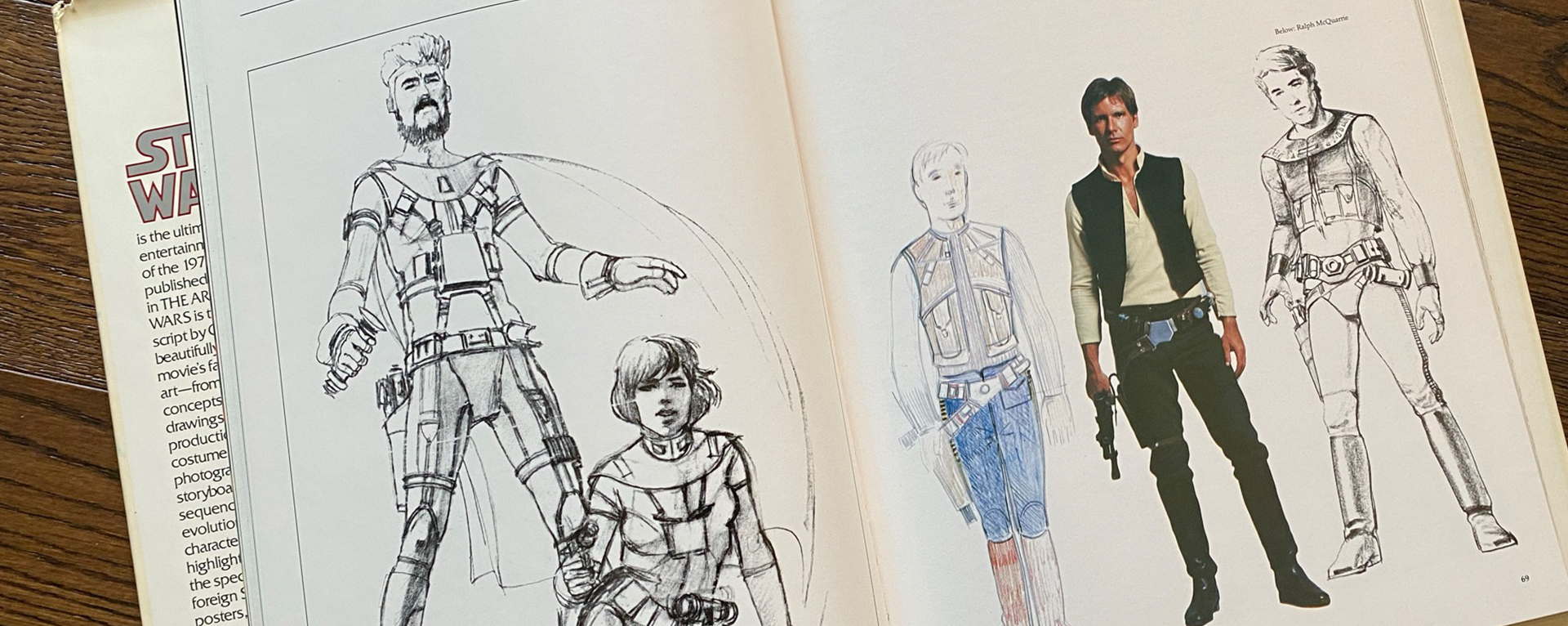History in Objects: The Art of Star Wars
The First in a Series that Continues Today Arrived Over 40 years Ago
One of Lucasfilm’s earliest corporate employees was Carol Titelman (neé Wikarska). Hired not long before the release of Star Wars: A New Hope (1977), she oversaw the company’s publishing efforts among other responsibilities from Lucasfilm’s southern California offices. At the time, the company was developing a series of non-fiction books that peeled back the curtain on the making of George Lucas’ space fantasy, including The Star Wars Sketchbook from 1977, which compiled line-drawings by concept artist and visual effects art director Joe Johnston.
The Sketchbook would foreshadow an even more comprehensive volume that Lucasfilm published with Ballantine Books in 1979. Edited by Titleman, The Art of Star Wars was a 175-page tome full of artwork, photographs, and information from concept to completion of the film. Its content was “an abundance of sketches and paintings that recreate the imaginative process that went into the making of Star Wars,” as Titelman wrote in her brief foreword. Its three parts included an annotated screenplay, poster and advertising artwork, and even a final section of illustrations by the public, such a professional cartoonists – like Hank Ketcham and his Dennis the Menace – and eight-year-old fans. Because the volume arrived a full two years after the debut of A New Hope, the cultural phenomenon that was Star Wars had already been a subject of attention for some time.
The Art of the Star Wars would establish a new precedent for Lucasfilm’s ongoing publishing. “Art of” books were published for both Star Wars: The Empire Strikes Back (1980) and Star Wars: Return of the Jedi (1983), with more coming for the Star Wars prequel trilogy, even video game release like Star Wars: The Force Unleashed (2008). In the wider industry, The Art of Star Wars helped inspire a general interest in exploring the craft of filmmaking through books, a publishing sub-genre that has only grown with the public’s fascination. In the stories of yesterday’s films are the lessons that inspire the films of tomorrow.
—




